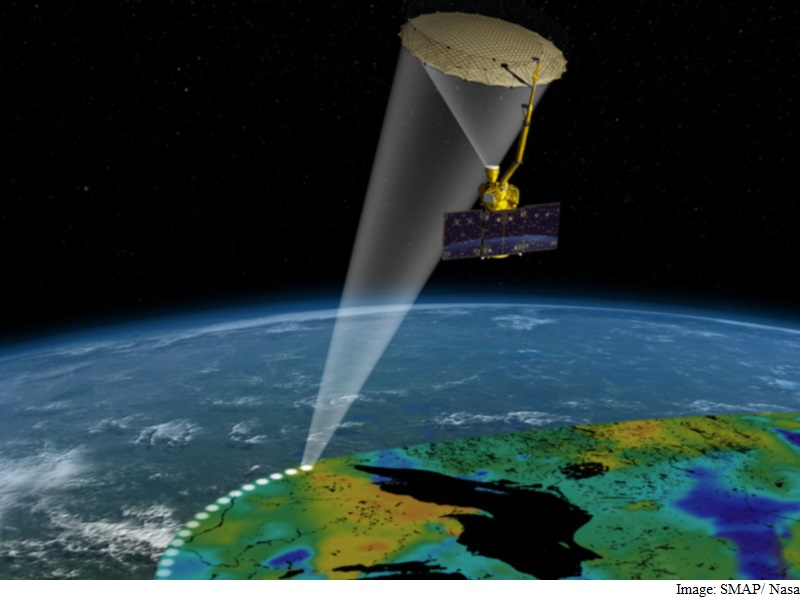- Home
- Science
- Science News
- New Nasa Soil Moisture Satellite Loses 1 Science Instrument
New Nasa Soil Moisture Satellite Loses 1 Science Instrument

The radar instrument aboard the Soil Moisture Active Passive satellite stopped transmitting on July 7 due to a problem with a high-power amplifier. An anomaly team was formed at Jet Propulsion Laboratory to determine if normal operation could be restored, Nasa said.
An attempt to power up the radar on Aug. 24 was unsuccessful, and it was determined that all possible options had been exhausted and the radar was not recoverable, a space agency statement said.
The SMAP satellite was launched Jan. 31 from Vandenberg Air Force Base, California, on a three-year, $916 million (roughly Rs. 6,071 crores) mission to map soil moisture around the globe and determine whether the soils are frozen or thawed.
In addition to increasing knowledge about Earth's water, energy and carbon cycles, its practical uses may include improving monitoring and predicting floods and droughts and improving weather forecasting and predictions for crop yields, according to Nasa.
The satellite's science operations began in April and it collected nearly three months of data while the radar was operating. The first global soil moisture maps were released on April 21.
Nasa said the satellite's active radar and passive radiometer instruments were designed to complement each other and overcome each instrument's limitations.
Dara Entekhabi, the SMAP science team leader at the Massachusetts Institute of Technology, said in a statement that some planned applications of data will be impacted by the loss of the radar, but the mission will continue to produce "valuable science for important Earth system studies."
Nasa appointed a board to determine how the problem occurred and JPL will form a separate failure review board to work with that investigation.
Catch the latest from the Consumer Electronics Show on Gadgets 360, at our CES 2026 hub.
Related Stories
- Samsung Galaxy Unpacked 2025
- ChatGPT
- Redmi Note 14 Pro+
- iPhone 16
- Apple Vision Pro
- Oneplus 12
- OnePlus Nord CE 3 Lite 5G
- iPhone 13
- Xiaomi 14 Pro
- Oppo Find N3
- Tecno Spark Go (2023)
- Realme V30
- Best Phones Under 25000
- Samsung Galaxy S24 Series
- Cryptocurrency
- iQoo 12
- Samsung Galaxy S24 Ultra
- Giottus
- Samsung Galaxy Z Flip 5
- Apple 'Scary Fast'
- Housefull 5
- GoPro Hero 12 Black Review
- Invincible Season 2
- JioGlass
- HD Ready TV
- Laptop Under 50000
- Smartwatch Under 10000
- Latest Mobile Phones
- Compare Phones
- Honor Win RT
- Honor Win
- Xiaomi 17 Ultra Leica Edition
- Xiaomi 17 Ultra
- Huawei Nova 15
- Huawei Nova 15 Pro
- Huawei Nova 15 Ultra
- OnePlus 15R
- Asus ProArt P16
- MacBook Pro 14-inch (M5, 2025)
- OPPO Pad Air 5
- Huawei MatePad 11.5 (2026)
- Xiaomi Watch 5
- Huawei Watch 10th Anniversary Edition
- Acerpure Nitro Z Series 100-inch QLED TV
- Samsung 43 Inch LED Ultra HD (4K) Smart TV (UA43UE81AFULXL)
- Asus ROG Ally
- Nintendo Switch Lite
- Haier 1.6 Ton 5 Star Inverter Split AC (HSU19G-MZAID5BN-INV)
- Haier 1.6 Ton 5 Star Inverter Split AC (HSU19G-MZAIM5BN-INV)

















